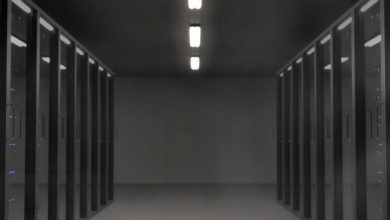Time tracking in 2025: From micromanagement to autonomous productivity hacks
Have you ever thought about how time tracking has changed over the years?

From being perceived as an intrusive technique of over-surveillance to positioning itself as a crucial element of autonomous productivity in the workspace, it has transformed a lot.
In 2025, this positive shift has become an essential approach to this increasingly remote and hybrid work landscape. It is now identified as a valuable approach to improve employee focus, optimize workflows, and drive teams towards success, rather than being viewed solely as a tool for time tracking and micromanagement.
With remote work embedded in every industry, the shift of focus from simply tracking work hours to assessing real value delivered is fascinating. Moreover, with the rise of more innovative technologies, involving new focus-based performance metrics and AI-assisted time-blocking tools, time tracking has evolved to a more data-driven, sophisticated, and human-centric approach. So, let’s uncover why adapting to this change could be one of the key solutions to unlock better productivity and work-life fulfillment.
The shift
Historically, time-tracking was recognized as a tool to control employees’ clock-in and out hours, constantly under the management’s radar. However, with the remote work boom during the pandemic, several critical limitations of this model were exposed. So, organizations are now realizing that employee trust and autonomy matter and can bring better outcomes and accomplishments than strict monitoring.
This is why monitoring tools are now designed to empower the workforce to self-assess and regulate, offering real-time feedback to improve their work productivity and well-being. The new and innovative goal is to encourage employees to figure out their most productive patterns, minimize distractions, and maintain a work-life balance while delivering expected value to the business.
This transformation is crucial for effective remote worker time tracking, promoting balanced visibility and accountability with flexibility and respect for employees’ private hours.
AI-assisted time-blocking tools
AI-driven time-blocking tools are a superior element driving this shift. These tools are smart systems that can analyze communication patterns, tasks, calendars, and even employee energy levels for daily schedule optimizations, providing users with extra time from manual planning and activities to deep, distraction-free work.
A few of the leading examples are:
Insightful.io
Although Insightful is renowned for its amazing productivity analytics tool, it also supports smart scheduling and workflow optimization. It analyzes real-time app usage and activity tracking insights to predict how employees can efficiently restructure their time blocks for maximum output. This function is especially useful in remote monitoring, where a dynamic balance of asynchronous partnership and focused individual work is a must.
Morgen and Motion
These apps leverage machine learning to assess meeting frequency, personal preferences, and workload complexity to produce adaptive and smart schedules. It allows employees to safeguard their focus time and incorporate collaborative work, simultaneously.
Reclaim.ai
This platform connects with the Google Calendar of employees to enable automatic time reservation for breaks, habits, and tasks based on availability and priorities. It also effectively updates set schedules as and when new tasks or events arise.
So, employees wanting to restructure their work schedules of the day automatically, while also keeping note of flexibility and control of autonomy, must leverage these powerful tools. This will enable them to accomplish more with less stress and pressure, along with minimized managerial oversight.
As for remote worker time tracking, such monitoring platforms help individuals with autonomous time management and redefine accountability, while allowing employers or managers a clear visibility into how tasks are fulfilled, rather than when.
Reimagined focus metrics to measure productivity
Rather than solely emphasizing tracking and recording employees’ worked hours, advanced platforms have now redefined the approach by measuring the effectiveness of the time used. These focus metrics transform the priority from quantity to quality. Some of the key indicators are:
- Task completion rates
- Context switches per day
- Time spent in shallow vs. deep work
- Work/break ratio for energy maintenance
- Application usage patterns between productive and non-work/distracting apps
Superior platforms like Insightful, formerly known as Workpuls, provide their clients with a complete breakdown of work patterns by analyzing project timelines, behavioral anomalies, and desktop activity to reflect any signs of burnout risks or inefficiencies. Even employees are given the autonomy to access dashboards for self-assessment, while managers get anonymized data to make non-invasive and informed decisions.
This type of system guarantees that remote worker time tracking addresses and respects employee privacy and rights while also facilitating valuable results. Using focus metrics promotes timely support and coaching for employees instead of policing deviations.
Withstanding the digital presenteeism epidemic
Did you grasp the concept of digital presenteeism? The resulting concern of the hybrid workplace, digital presenteeism, is the constant pressure to appear online. It reflects employees’ fear of staying responsive 24/7, as otherwise, action could be perceived as unproductive, leading to stress, overwork, and disengagement.
To battle this phenomenon, progressive companies are implementing the following strategies:
Reimagine productivity standards
- Eliminating the initial primary metric of logged hours.
- Normalizing non-parallel communication to decrease real-time work pressure.
- Focusing on objective completion, innovative milestones, or customer satisfaction.
Clear and fair availability of protocols
- Clearly define the “on” and “off” work hours.
- Leverage status indicators or shared calendars to highlight availability.
- Encourage teams or managers to avoid instant responses unless urgent.
Form a work culture of trust and flexibility
- Provide tailored training to employees on time management and self-leadership.
- Offer flexible work hours to incorporate varied time zones or work styles.
- Allow teams to take wellness breaks without any stigmatizing concerns or to block focus time.
These innovative strategies help lower the risks of presenteeism and enhance overall employee morale and retention in remote work settings.
To wind up
In 2025, the notion of time tracking shifted towards minimizing the risk of burnout, maximizing attention to well-being, and reclaiming time. With all the advanced technological tools that resemble a digital productivity coach, organisations are now empowering their employees by driving towards healthier and more effective work habits.
This change is especially vital for the remote workforce. The right approach, entailing modern technology usage, empathy, and aggregated insight, remote worker time tracking can enhance employee performance, well-being, and promote a thriving workplace dynamic beyond borders.






